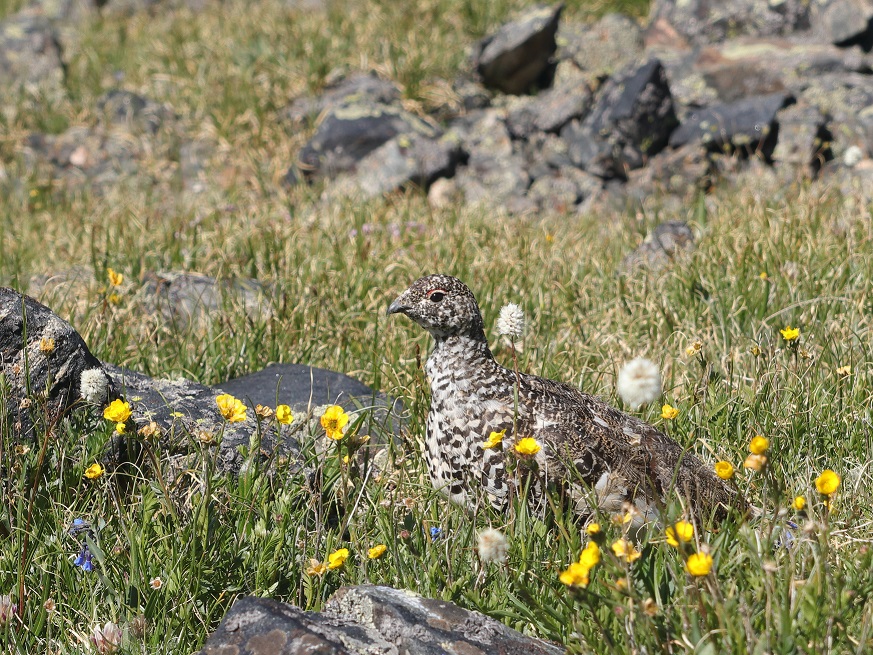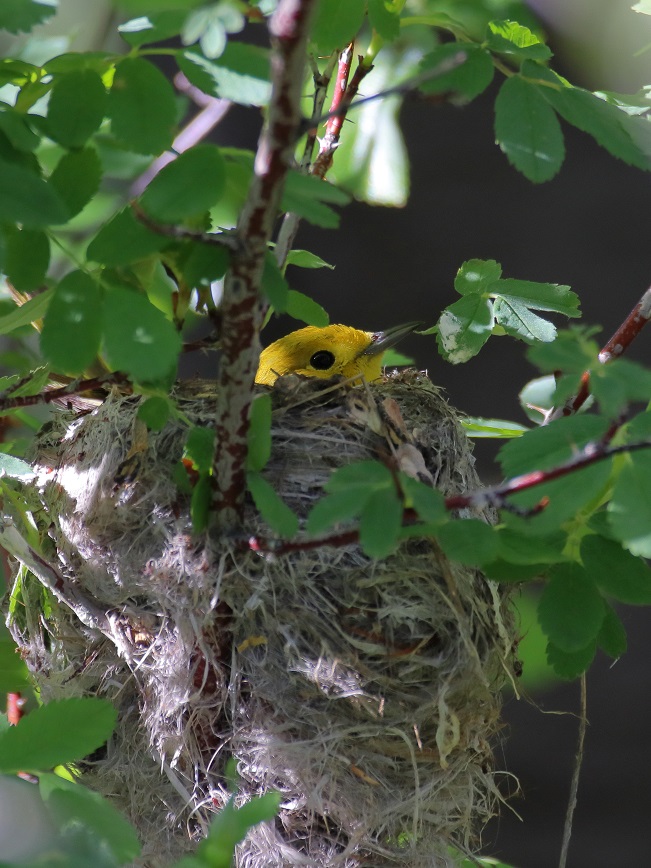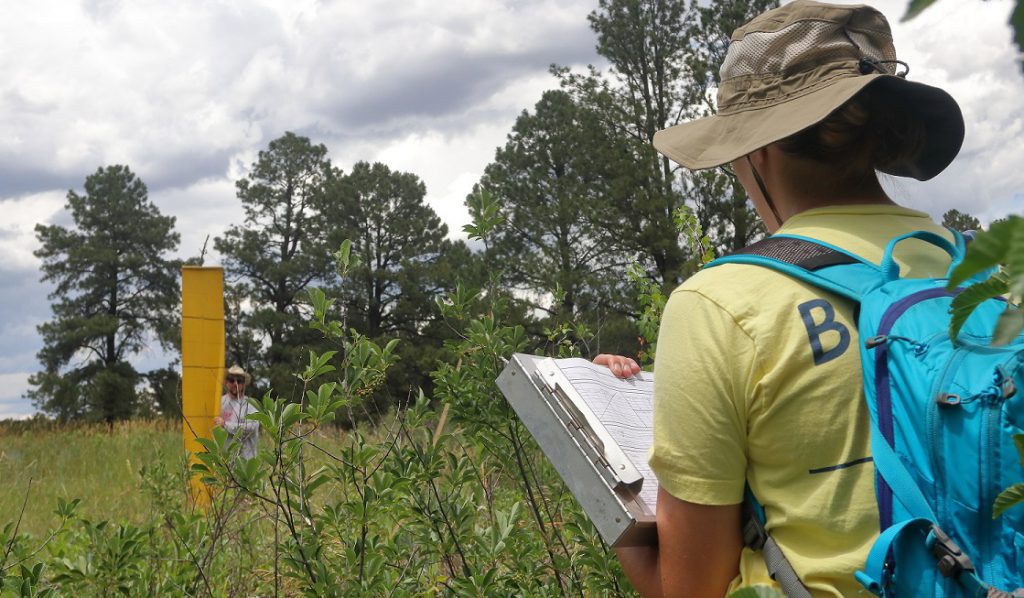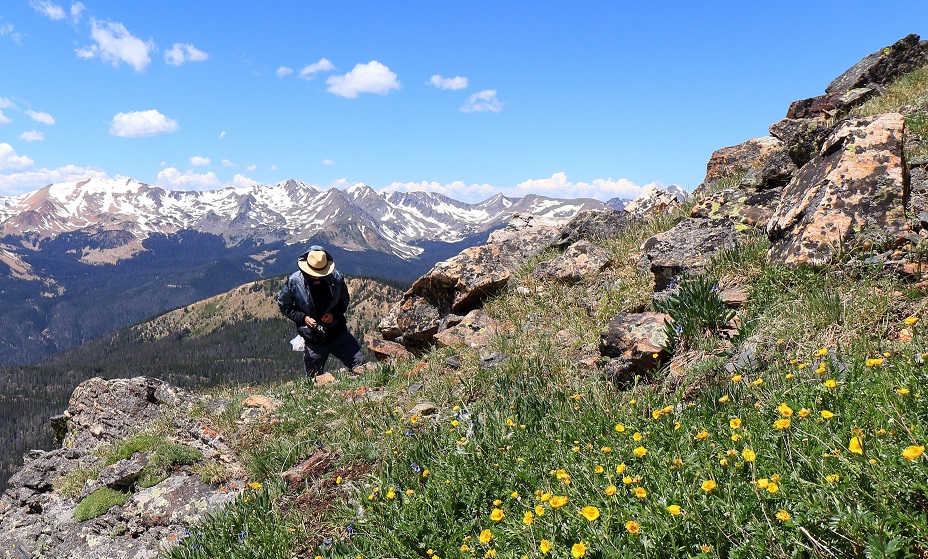By: Terutaka Funabashi
(CNHP Siegele Conservation Science Intern)
Hello, my name is Terutaka Funabashi. I am an international student from Japan currently majoring in Fish, Wildlife, and Conservation Biology at CSU. This summer I am doing my internship with CNHP as a Siegele Conservation Science Intern. During 10 weeks of internship, I worked for 6 different projects and traveled to the different parts of Colorado. The projects I worked for include vegetation sampling in Bow & Arrow Ranch near Walsenburg, CO to collect baseline data, habitat assessment of Preble’s meadow Jumping Mouse (Threatened species under Endangered Species Act) in Air Force Academy, global scale, long-term monitoring study in Rocky Mountain National Park, and more! I did wide variety of fieldwork including soil sampling, vegetation data sampling, vegetation structure survey, BioBlitz, aquatic insects survey, small mammal trapping with Sherman Live traps, alpine plant community sampling, and wetlands surveys. We sometimes hiked 10 miles in wilderness to document the presence of black swift, a species of bird nesting near waterfalls! I did fieldwork in various kinds of ecosystems such as prairie grassland, forests, wetlands, and alpine region. Working in the different environment with different goals taught me how important it is to do through preparation for fieldwork every time.

White-tailed Ptarmigan at GLORIA site 
Yellow Warbler nest from BioBlitz at Aspen Center for Environmental Studies
One of the most interesting experience was the biodiversity inventory in Roaring Fork watershed diversity inventory. Through this project, I met many stakeholders in Roaring Fork watershed. They are all interested in wildlife in this area for various reasons. Some people care about them since hunters follow wildlife and trespass the private land. Others are worried about them because there is a proposed plan for making outdoor recreational trail in the important wildlife habitat. As I am interested in human-wildlife conflicts, understanding these different values surrounding wildlife resources is very crucial and always inspires me. I learned through this experience that conservation is not only about wildlife and plants but also about people.
Also, visiting Rifle Ranch for the first time for two years was very meaningful to me. I volunteered for CNHP two summers ago and had opportunity to join BioBlitz (documenting all the living species in a study area) at Rifle Ranch. We walked around to document birds and plants, and set up small mammal traps to understand what kinds of small mammals are there. This summer, I went back to Rifle Ranch to do restoration work in wetlands instead of BioBlitz. After we learned about the biodiversity in the ranch through a few years of BioBlitz, conservation at Rifle Ranch has moved on to the next step. Based on our biodiversity inventory, CNHP has identified wetlands along the Rifle Creek as a primary focus for restoration. We planted oak trees, willows, and shrub species to restore the native vegetation. It is an awesome experience for me to see how conservation proceeds and be in part of the different stages!

Fellow intern, Renee conducting vegetation height survey at Air Force Academy
Last two weeks, I was working for the project called GLORIA (GLobal Observation Research Initiative in Alpine environments) in Rocky Mountain National Park. This is global-scale research to investigate how the climate changes affect the biodiversity in alpine ecosystems. Through this experience, I learned many alpine plants, unique methods to capture the plant community, and the skills to do fieldwork in alpine environments. It is also cool to know that some areas in my home country, Japan, are interested in GLORIA project and that one of them is currently in set up! I hope I can further work on this project both in the U.S. and Japan.

John conducting vegetation survey in Rocky Mountain National Park
I greatly appreciate this opportunity to gain field and will do my best to apply the skills and knowledge that I have learned this summer for my academics and another field work opportunity!




